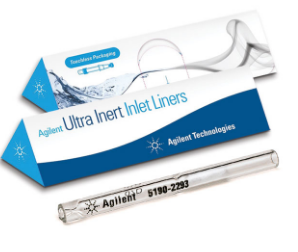When it comes to liner selection many of us are baffled about which to choose and will often default to liners that we are used to when developing a method. We just pick a standard split or splitless one and hope for the best. Selecting the right liner for the right application is of crucial importance along with liner inertness - this is where Agilent can come to your rescue and help clear your confusion.
What type of liner is best for your application?
Direct or splitless injector liners can be used with samples that are “clean.” For each of these types of injections, the entire sample is transferred onto the column after being vaporized. Because of this, the maximum injection volume is strongly correlated to the diameter of the liner, and smaller injection volumes are recommended.
Types of clean samples that are usually associated with direct connect and splitless injections are water samples, SPME, or headspace injections. Additionally, analytes that can be isolated, extracted and analysed at low concentrations can also use direct connect or splitless injections. These two options are great when you have an analysis where sensitivity is important.
The most common, and simplest split liner is straight tube with a single restriction or taper at the bottom. This restriction helps to trap non-volatile compounds and focus the volatile compounds onto the column. A variation on this liner is one that has glass wool added to it. Glass wool is a wonderful tool that will help with issues due to compounds with different thermal masses in the same sample and also provides an additional surface to trap non-volatiles.
How do you know if you are using the wrong liner?
The first step is to look at your chromatograph. Do your peaks tend to shift? Are your retention times not reproducible? Does your baseline look like it’s rising, and thereby creating a loss of sensitivity? These are all symptoms of a restriction or blockage in a line, which could be caused by using the wrong liner.
 Why choose Agilent's Ultra Inert Liners?
Why choose Agilent's Ultra Inert Liners?
Whether you are analysing active compounds for the environmental industry or screening for drugs of abuse, Agilent Ultra Inert Inlet Liners help ensure an inert GC flow path for higher sensitivity, accuracy, and reproducibility. They offer:-
- Exceptional batch-to-batch uniformity
- Low to no bleed or background contamination
- Superior coverage even with highly active compounds
- A robust, reproducible, and reliable inert flow path.
Developed and manufactured using a suite of tests specifically designed to ensure the highest level of liner inertness available, these Ultra Inert GC Inlet Liners are available in split and splitless, with and without wool. They are recommended for trace level analysis of samples, especially samples with active compounds.




